Fighting Biting Cold, 4 Engineers Bring Electricity to Himalayan Refugee Village Near LAC
Fighting the biting cold and darkness for decades, four Ladakhi engineers working with the Global Himalayan Expedition (GHE) found a way to bring light to this village near the Line of Actual Control (LAC).
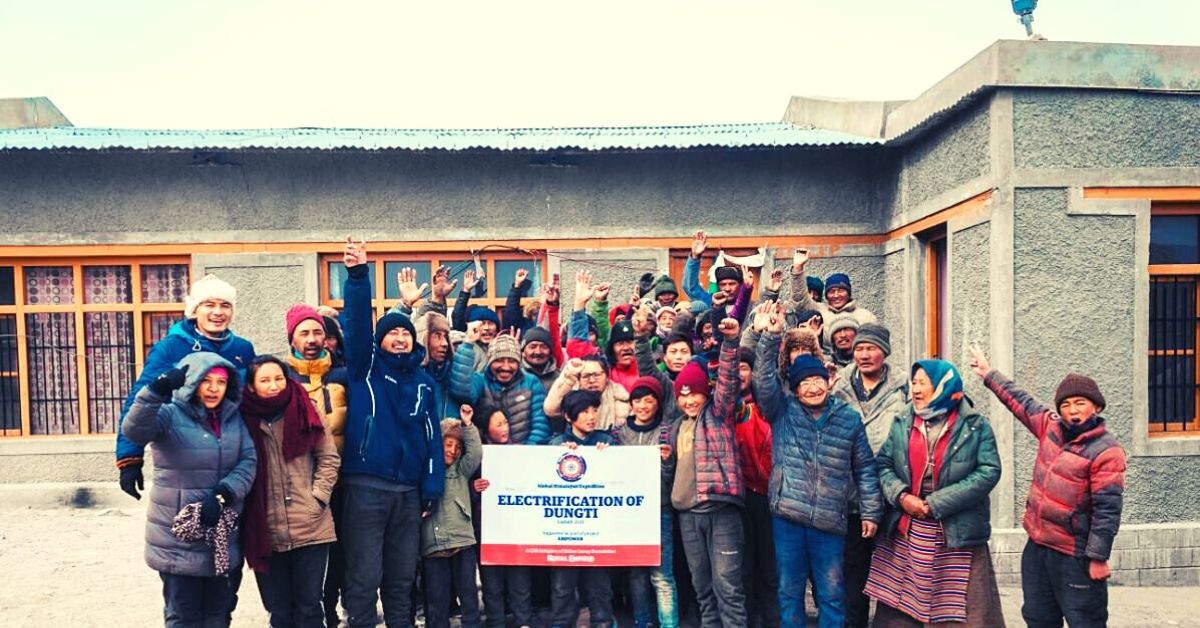
In the aftermath of the 1962 India-China War, 30 families from Tibet migrated to Ladakh and settled in the village of Dungti to form among the very first Tibetan Refugee (TR) villages in India. Located in the picturesque Changthang region of Ladakh on the Nyoma-Demchok circuit, Dungti lies perilously close to the Line of Actual Control (LAC).
Residents here are predominantly herders of the Pashmina goat and their primary source of livelihood comes from selling the fine Pashmina wool that comes from it. Despite playing a pivotal role in bordering India’s borders for decades, this settlement has lived in complete darkness since 1962 with no access to basic electricity.
All of this changed on the night of 4 February 2021, when a team of four Ladakhi engineers working with the Global Himalayan Expedition (GHE) brought light to this village by harnessing the power of solar energy. For the first time in nearly 60 years, this village experienced what many of us city folk take for granted—the magic of electricity.
Surveying the village
It takes about seven hours by road to reach Dungti from Leh. After passing Nyoma, you cross the Loma Bridge and take a left from there on an unpaved road to Dungti and Demchok, which was recently in the news during the recent tensions on the border.
“In the past eight years, we have electrified about 100 villages in Ladakh with solar-based DC electricity. But we realised that not a single project was done in a TR village. In the past, we had crossed Dungti while travelling to Demchok. We knew of its existence but weren’t sure whether the village had electricity or not. Prior to the project, we surveyed the village and found that it was in darkness for nearly 60 years,” says Shakir Hussain, the lead engineer of this project from Chuchot village.
While surveying the village, Shakir and his team found that of the 65 plus homes in this village, only 52 were occupied with permanent residents. The rest either lived as nomads in rebo tents or left for Leh in search of work. Although the village boasts of stunning scenic beauty, people there live in extremely difficult conditions. Situated at an altitude of 13,000 to 14,000 feet above sea level, temperatures in the winter range between -25 to -30 degrees Celsius.
Shakir tells The Better India that in the past, the village was given a diesel generator by the local administration but it was left unused because there was no fuel to run it. In addition, no transmission lines were running through the village.
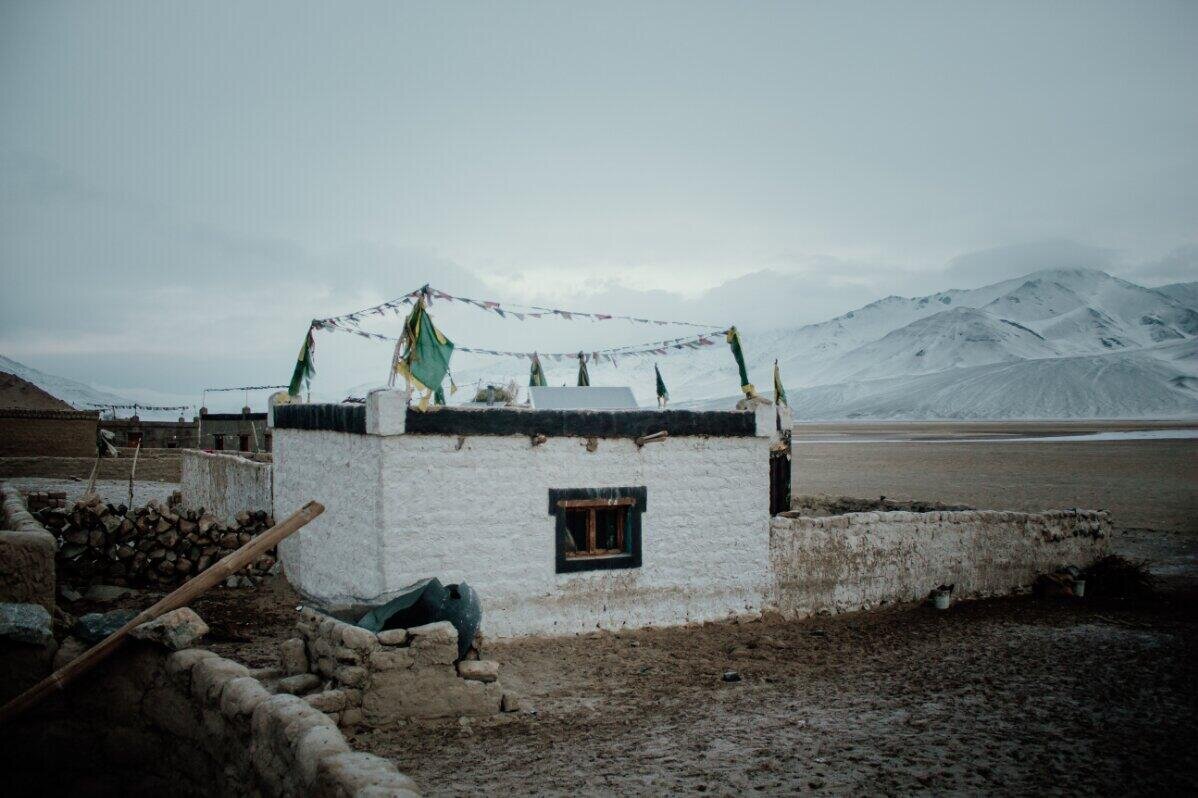
Electrifying the village
Establishing an 8.6 KW setup for the entire village, each house received a solar nano grid with three LED lights and two LED batons alongside USB charging facilities. Besides bringing light to 52 homes, the team also set up 10 solar LED street lights and even electrified the local community hall and monastery where residents go to pray.
“We took about five days to electrify the village. I was accompanied by three solar engineers from GHE. Having said that, there were some real challenges. Residents there lived in homes with just two small rooms and initially, they didn’t have much living space where we could lay our head down. But they were kind enough to adjust themselves and let us live in one of their homes. Another challenge was the biting cold, but once again the villagers were kind enough to burn dried goat dung all through the night to keep us warm,” says Shakir.
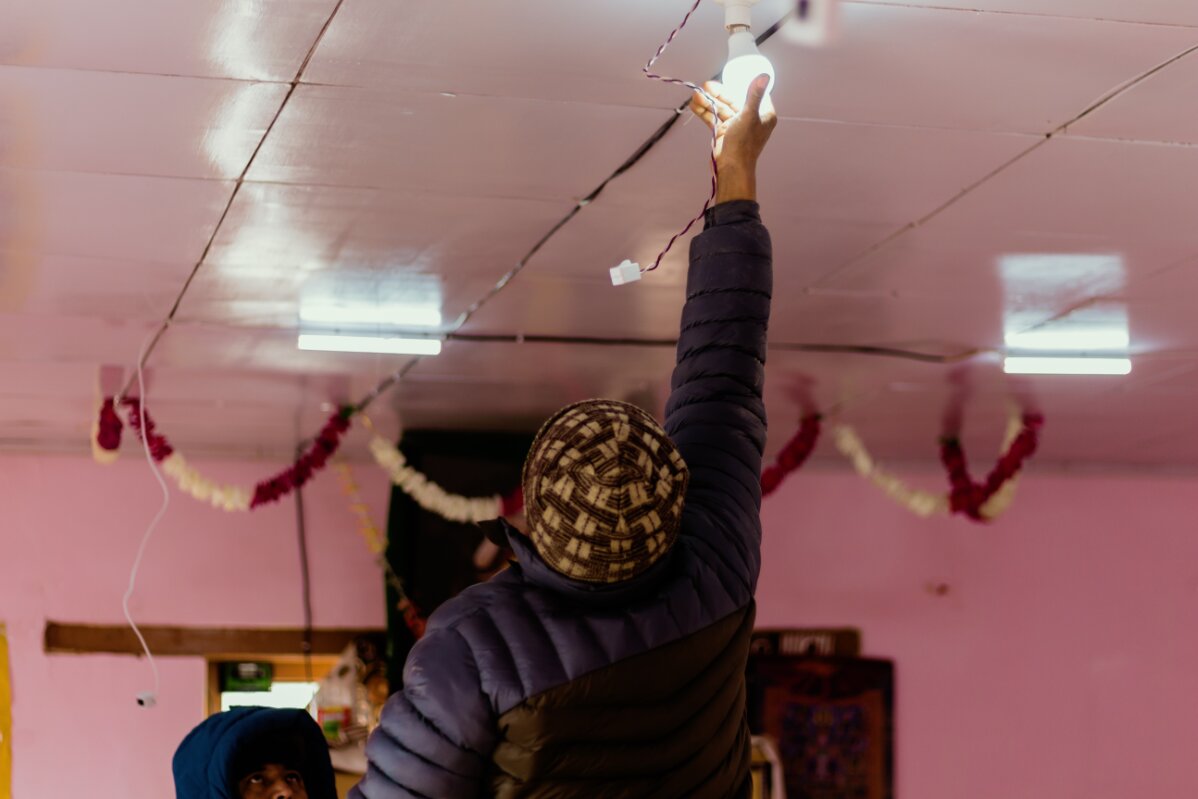
Gurmet Angmo, a solar engineer with the team, meanwhile spoke of another challenge. “It’s so cold in these parts that wiring is difficult, particularly outside the house. We sometimes have to take the wiring inside, heat it up next to the bukhari, and then cut it,” she says.
However, it was the village’s hospitality and desire to light up their homes that saw the team get through some difficult circumstances. As Lobzang, the headman or Goba of this village, says, “Residents living in this Zero Border village have suffered for years without the benefit of modern amenities like electricity. Despite requests in the past to various authorities, we received no electricity. I had never seen electricity since my childhood and we’ve been here since 1962. For nearly 60 years, we lived in darkness.”
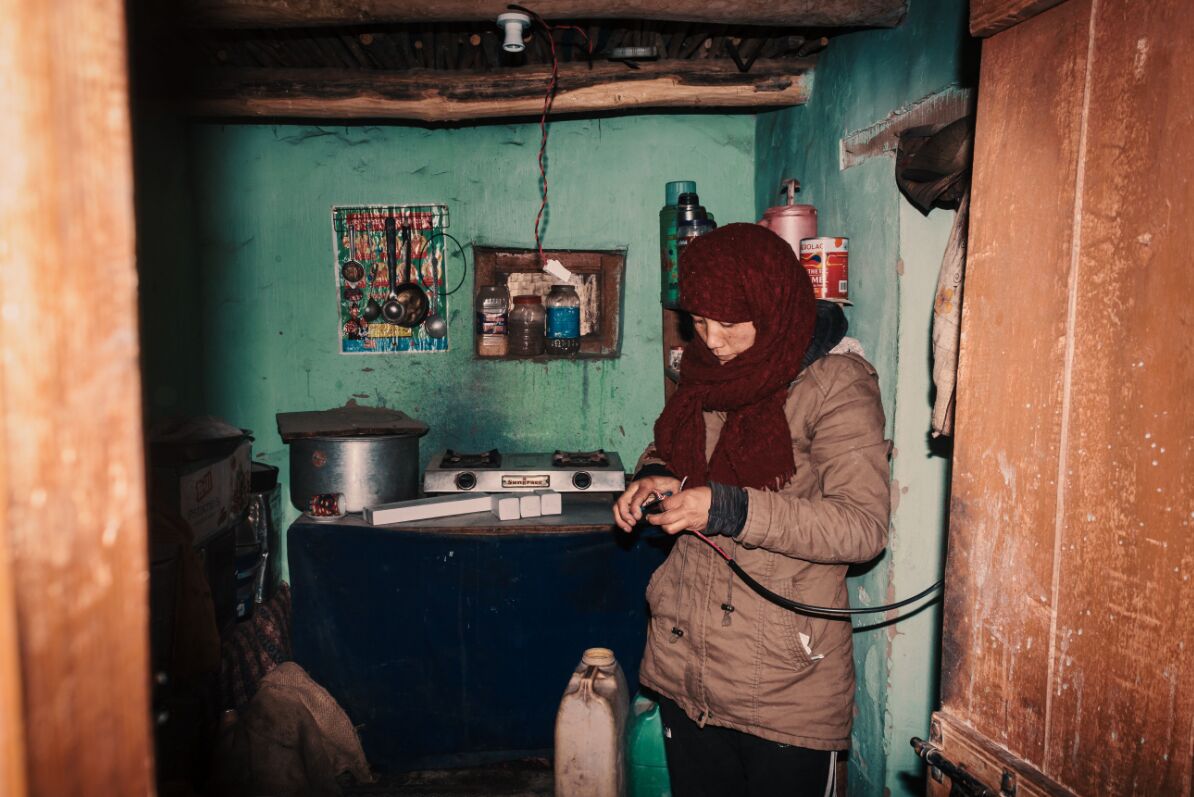
Bringing light to their lives
With equipment for the village sponsored by the CSR (corporate social responsibility) arm of Royal Enfield, the GHE team electrified the village on the night of 4 February. “After we electrified the village with all the necessary wiring and switched the lights on, the villagers were very extremely happy. Every household gave us khatags (a traditional ceremonial scarf given on various occasions in Tibetan Buddhist communities) to express their gratitude,” says Shakir.
But what about maintenance work? How are the village and the GHE going to ensure that this solar infrastructure remains standing for years to come? “We follow the same system of maintenance in every village we electrify. Each household here deposits Rs 100 every month into a joint account of the village. Every six months we visit the village and the annual maintenance costs for these solar lights are paid for from that joint account. By depositing their own money, they have a stake in ensuring this works in the long run,” he adds.
In a video shot by Iftikhar Hussain, a Ladakhi filmmaker, one elderly resident is heard saying, “Earlier, if I opened the door in the day, the biting cold wind would come inside. If I closed the door, I couldn’t see anything. Now, I can close the door and see, thanks to people at GHE. I am very grateful to them.”
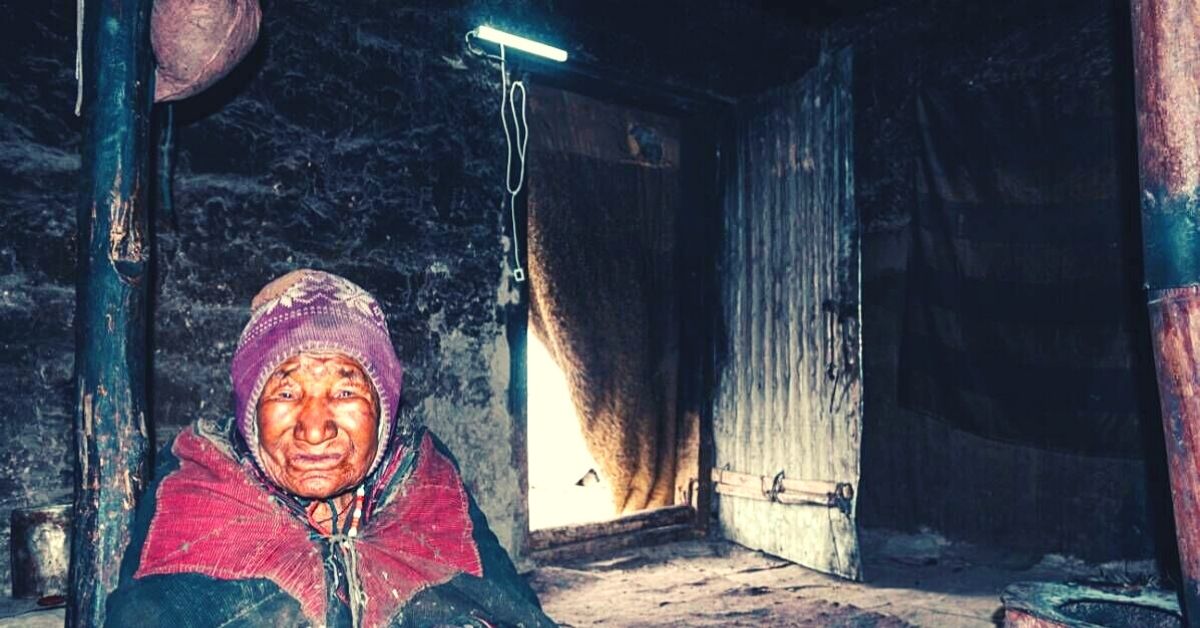
Meanwhile, Irfan Hussain, a Naropa Fellow interning with GHE, who went with the team to Dungti, speaks to The Better India of the importance of bringing light to this remote corner of India.
“People of Dungti lived in darkness. After the electrification project, residents told us how they have found a new lease of life. There was a lot of cooperation from the local administration and the affected community. Although it’s a stunningly beautiful place, living there is very hard. With just three toilets for 52 homes, it’s imperative for the administration to assist in the development of this village. If this route opens for border tourism, it’s going to be a very spectacular destination,” he says, adding, “If you want to see the real Tibet in Ladakh, you must visit Dungti. Residents there practice a very unique culture that past generations from Tibet brought with them from their dress, cuisine to their nomadic lifestyle.”
Taking the long view, Irfan makes a very valid observation. While preserving their way of life, the local district administration must introduce basic developmental measures. Of course, it’s a tough balancing act. But without compromising their culture and way of life, introducing basic facilities such as quality healthcare, education, electrification and sanitation is necessary. If not anything else, the incentive for the Indian state here is ensuring border security. If residents migrate to Leh, who will monitor what’s happening on our borders? After all, no one understands the terrain better than those who have lived there for generations.
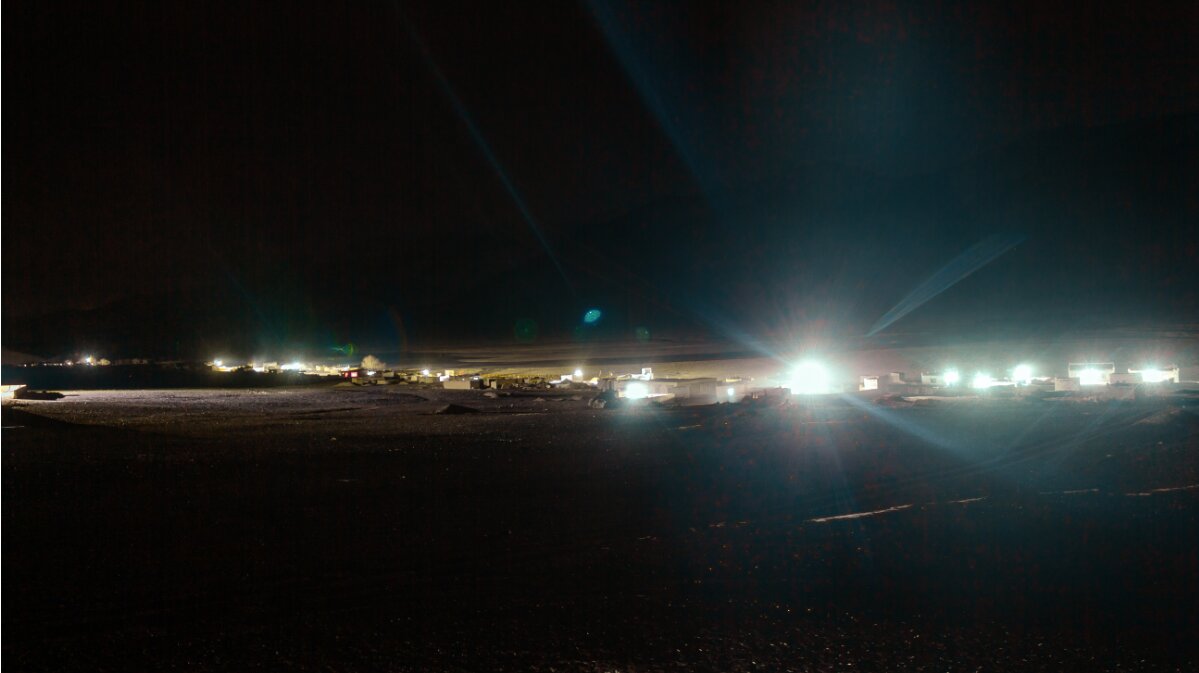
(Edited by Yoshita Rao)
Like this story? Or have something to share? Write to us: [email protected], or connect with us on Facebook and Twitter.
If you found our stories insightful, informative, or even just enjoyable, we invite you to consider making a voluntary payment to support the work we do at The Better India. Your contribution helps us continue producing quality content that educates, inspires, and drives positive change.
Choose one of the payment options below for your contribution-
By paying for the stories you value, you directly contribute to sustaining our efforts focused on making a difference in the world. Together, let’s ensure that impactful stories continue to be told and shared, enriching lives and communities alike.
Thank you for your support. Here are some frequently asked questions you might find helpful to know why you are contributing?


This story made me
-
97
-
121
-
89
-
167











